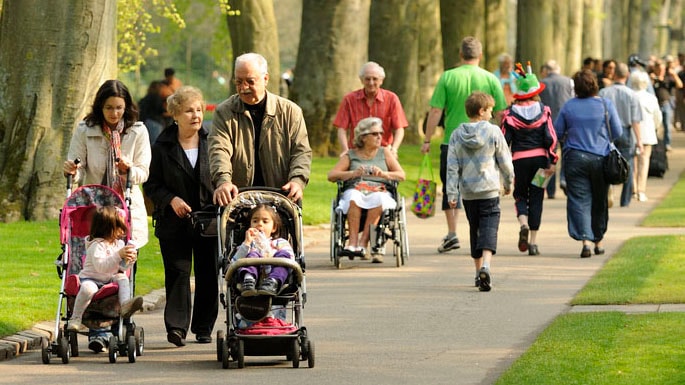Key points
CDC funds states to support the health and well-being of people with arthritis. They are working to reduce related health disparities by increasing awareness, education, and access to effective arthritis programs.

State Public Health Approaches to Addressing Arthritis
CDC is investing in the health of adults with arthritis. The agency funds 12 states through the multi-component cooperative agreement, State Public Health Approaches to Addressing Arthritis (CDC-RFA-DP-23-0001).
- The 12 recipients began receiving about $4 million in total funding per year for 5 years starting in 2023.
- They are implementing activities to support the health and well-being of people with arthritis and to reduce health disparities in their areas.
- They are also working with key partners to increase awareness of physical activity benefits among adults with arthritis.
Component A: Capacity and infrastructure building activities
Component A supports the dissemination of arthritis-appropriate, evidence-based interventions (AAEBIs). Recipients are increasing referrals and access to AAEBIs and increasing participation among people with arthritis.
To do this, recipients will:
- Establish statewide capacity and infrastructure to deliver AAEBIs.
- Reach at least 7,500 adults or 1% of the total number of adults with arthritis in their state, including populations disproportionately affected by arthritis.
- Increase awareness among health care providers about the importance of physical activity counseling for arthritis management and the availability of AAEBIs.
- Collect and use data to guide programmatic activities and track progress towards outcomes.
Component A recipients
Six recipients are each receiving about $225,000 annually. Recipients include:
- Iowa State University of Science and Technology
- Michigan Department of Health and Human Services
- Montana Department of Public Health and Human Services
- Oklahoma State Department of Health
- Vermont Department of Health
- West Virginia University Research Corporation
Component B: Expansion of programs
Component B focuses on making arthritis-related public health programs more available.
To do this, recipients will:
- Disseminate AAEBIs more widely, reaching at least 15,000 adults or 2% of the total number of adults with arthritis in their state, including populations disproportionately affected by arthritis.
- Expand electronic systems to sustain and support health care providers in physical activity assessment and counseling for arthritis and referral pathways for AAEBIs.
- Collect and use data—including Behavioral Risk Factor Surveillance System (BRFSS) data—to guide programmatic activities and track progress towards outcomes.
Component B recipients
The six recipients are each receiving about $410,00 annually. Recipients include:
- Minnesota Department of Public Health and Services
- New Hampshire Department of Health and Human Services
- Oregon Health Authority Public Health Division
- Utah Department of Health and Human Services
- University of North Carolina at Asheville
- Virginia Department of Health
Anticipated Outcomes
The specific outcomes expected by the end of the project period include:
- Increased AAEBI enrollment resulting from state program activities.
- Increased number of people with arthritis who are counseled about physical activity benefits for arthritis management.
- Reduced disparities in access to arthritis care.
- Improved health outcomes among people with the condition.

More information
Access the grant announcement here: (CLOSED) Grant Opportunity for CDC-RFA-DP-23-0001: State Public Health Approaches to Addressing Arthritis
